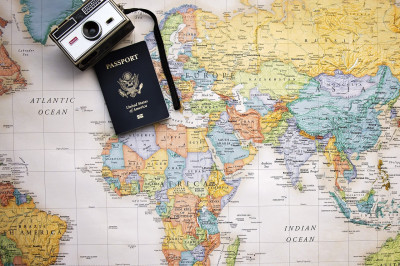Understanding Anime: A Brief Overview
Anime, a term derived from the English word "animation," refers to a distinctive style of animated media that originated in Japan. Characterized by its colorful artwork, fantastical themes, and vibrant characters, anime encompasses a wide range of genres and appeals to various audiences. It is a medium that has evolved from early theatrical screenings to a major component of Japanese broadcasting and has now become a global phenomenon.
The Evolution of Anime
The history of anime dates back to the early 20th century, with the earliest known Japanese animation dating to Over the decades, it has grown from experimental projects to a significant industry, with iconic works like Osamu Tezuka's "Astro Boy" in the 1960s laying the groundwork for the modern style and storytelling techniques. The 1980s and 1990s saw a surge in popularity with series such as "Dragon Ball," "Sailor Moon," and "Neon Genesis Evangelion," which expanded anime's reach and solidified its place in global pop culture.
Anime's Distinctive Features
Anime is known for its unique art style, with characters having large, emotive eyes and expressive facial features. This style allows for a high degree of emotional expression, making it easy for audiences to connect with the characters. The animation techniques used in anime often favor stylized motion over the fluidity typical of Western animation, giving it a distinctive feel that fans have come to love.
Genres and Themes
Unlike Western animation, which is often perceived as primarily for children, anime covers a broad spectrum of genres that cater to all age groups. From action-packed shonen for younger audiences to thought-provoking seinen for adults, anime does not shy away from complex themes and narratives. It also includes shojo, which is targeted at young girls, and josei, aimed at adult women, ensuring that there is content available for diverse demographics.
Cultural Significance in Japan
In Japan, anime is not just entertainment; it is an integral part of the culture. It influences fashion, language, and everyday life. Anime series often incorporate aspects of Japanese history, folklore, and societal norms, helping to preserve and disseminate cultural values. It is also used as an educational tool, teaching lessons on friendship, perseverance, and morality.
Anime's Global Impact
The international appeal of anime cannot be overstated. It has created a worldwide community of fans who not only consume the content but also engage with it through fan art, cosplay, and conventions. Anime has influenced Western animation and filmmaking, with many creators citing it as an inspiration for their work. The global success of anime has led to its recognition as a significant cultural export for Japan, contributing to the country's soft power and international image.
Economic Contributions
Anime's popularity has had a direct impact on Japan's economy. It has spawned a massive industry that includes not just the shows themselves, but also merchandise, video games, movies, and tourism. Fans from around the world travel to Japan to visit locations featured in their favorite series, attend events, and buy products, thereby contributing to various sectors of the economy.
The Role of Anime in Contemporary Media
In the age of digital media, anime has adapted to new modes of distribution, with streaming services making it more accessible than ever before. This ease of access has led to a surge in popularity, with anime series frequently trending on social media and generating significant online discussions. The medium has become a staple in contemporary media consumption, with its influence extending beyond traditional boundaries of animation.
The Historical Development of Anime as an IndustryThe Origins of Anime
Anime, as a distinctive form of media, has its roots in the early 20th century. The earliest known Japanese animation dates back to 1917, with works such as "Namakura Gatana" (The Dull Sword) and "Katsudō Shashin" (Moving Picture). These silent short films laid the groundwork for the anime industry, although they were heavily influenced by Western animation techniques and storytelling styles.
The Post-War Era and Toei Animation
After World War II, Japan faced a period of reconstruction. During this time, anime began to develop its own unique style. In 1948, Toei Animation was founded and became a pivotal player in the industry. Toei's early films, such as "Hakujaden" (The Tale of the White Serpent) in 1958, were the first color anime feature films and were instrumental in establishing anime as a commercially viable art form.
The Rise of Television Anime and Osamu Tezuka
The 1960s marked a significant shift with the introduction of anime to television. Osamu Tezuka, often called the "God of Manga," adapted his popular manga "Tetsuwan Atom" (Astro Boy) into a TV series in This was a revolutionary move that brought anime into homes across Japan and set the template for future series. Tezuka's production methods, including cost-cutting techniques like limited animation, allowed for the efficient production of anime series, making it a staple of Japanese television.
The 1980s: The Golden Age of Anime
The 1980s are often referred to as the Golden Age of anime, with an explosion of creativity and technical advancement. This era saw the release of iconic films such as "Akira" and "My Neighbor Totoro," which not only pushed the boundaries of animation but also gained international acclaim. The success of these films showed the world that anime was not just a form of entertainment but also an art form capable of telling complex and mature stories.
The Economic Bubble and Merchandising
During Japan's economic bubble in the late 1980s and early 1990s, the anime industry experienced a surge in production. This period also saw the rise of merchandising as a major revenue stream for anime producers. Franchises like "Dragon Ball" and "Sailor Moon" became global phenomena, with their success further fueled by a wide range of merchandise, from toys and clothing to video games.
The Impact of Studio Ghibli
Studio Ghibli, founded in 1985 by directors Hayao Miyazaki and Isao Takahata, has had a profound impact on the anime industry. With a focus on high-quality storytelling and animation, Ghibli's films, such as "Spirited Away" and "Princess Mononoke," have garnered critical acclaim and commercial success both domestically and internationally. The studio's global recognition has contributed significantly to the perception of anime as a serious artistic medium.
The Digital Revolution and New Distribution Channels
The advent of digital animation in the late 1990s and early 2000s transformed the production process, making it more efficient and opening up new creative possibilities. Additionally, the rise of the internet and streaming services in the 21st century has dramatically changed how anime is distributed and consumed. Platforms like Crunchyroll and Netflix have made anime more accessible to international audiences, further expanding the industry's reach.
The Current State and Future Prospects
Today, the anime industry continues to grow, with an increasing number of co-productions between Japanese studios and international companies. The industry has also seen a rise in the number of anime-inspired works produced outside of Japan, reflecting its global influence. As the industry evolves, it continues to explore new technologies, such as virtual reality, and new storytelling methods, ensuring that anime remains a dynamic and influential part of the global entertainment landscape.
Anime's Contribution to Japan's GDP: An OverviewThe Direct Impact of Anime Production
The anime industry in Japan is a significant contributor to the country's Gross Domestic Product (GDP). The production of anime involves a wide range of activities, from the initial concept and storyboarding to the final animation and sound design. Each of these steps employs a variety of professionals, including artists, writers, directors, and voice actors, as well as marketing and distribution teams. The direct spending on these productions circulates money through the economy, contributing to the overall economic output.
Merchandising and Licensing Revenue
Anime extends its economic influence beyond production through merchandising and licensing agreements. Characters and images from popular anime series are licensed for use on a multitude of products, including clothing, toys, stationery, and more. These products are not only popular domestically but also have a significant international market. The revenue generated from these licensing agreements adds to the economic impact of the anime industry on Japan's GDP.
Tourism and Anime Pilgrimages
Anime has also become a driver of tourism in Japan. Fans from around the world travel to Japan to visit locations featured in their favorite anime series, a phenomenon known as "anime pilgrimage." This influx of tourists contributes to the economy through spending on travel, accommodation, dining, and related tourism services. The anime industry's role in promoting cultural tourism thus has a positive effect on Japan's GDP.
International Sales and Exports
The global popularity of anime has led to a robust export market. Japanese anime series and films are distributed internationally through various channels, including television, streaming services, and physical media sales. The revenue from these international sales is a vital part of the anime industry's contribution to Japan's GDP. The export of anime also helps to strengthen Japan's balance of trade, as it is a cultural export that generates foreign currency inflows.
The Ripple Effect on Related Industries
Anime's economic impact is not limited to its direct contributions. The industry also has a ripple effect on related sectors, such as publishing, with manga often serving as source material for anime adaptations. The success of an anime series can lead to increased sales of the original manga, light novels, and other related literature. Additionally, the anime industry boosts the video game industry, with many games based on anime franchises or featuring anime-style graphics. These related industries benefit from the popularity of anime, further enhancing its overall contribution to Japan's GDP.
Media and Entertainment Infrastructure
Investment in the media and entertainment infrastructure necessary to support the anime industry is another way in which anime contributes to Japan's GDP. This includes the development of animation studios, post-production facilities, and distribution networks. The growth of the anime industry encourages investment in these areas, which not only supports the production of anime but also enhances the broader media landscape in Japan.
Employment and Skill Development
The anime industry is a significant employer in Japan, providing jobs not only within the animation studios but also in ancillary sectors such as advertising, retail, and convention organization. The industry's demand for skilled workers leads to investment in education and training programs, which contribute to the development of human capital and have long-term benefits for the Japanese economy.
Innovation and Technological Advancements
Finally, the anime industry drives innovation and technological advancements in animation and related fields. The competitive nature of the industry pushes studios to adopt the latest technologies and techniques, which can lead to breakthroughs with applications beyond anime. The investment in research and development, driven by the desire to produce high-quality anime, contributes to Japan's reputation as a leader in technology and innovation, with positive implications for the country's GDP.
Merchandising and Licensing: The Financial Backbone of AnimeThe Role of Merchandising in Anime Revenue
Merchandising is a critical revenue stream for the anime industry, often surpassing the earnings from the shows themselves. It encompasses a wide range of products, from action figures and clothing to home decor and video games. These tangible goods allow fans to engage with their favorite series on a deeper level, creating a physical connection to the anime.
Character Goods and Collectibles
Character goods, such as figurines, plush toys, and keychains, are among the most popular merchandise. They are often collected not just for their aesthetic appeal but also as a form of investment, with rare items appreciating in value over time. Collectibles also include limited edition releases and collaboration items, which can create a sense of urgency and exclusivity, driving up demand and sales.
Apparel and Fashion Collaborations
Anime has a significant influence on fashion, with t-shirts, hoodies, and accessories featuring anime graphics being hot sellers. High-profile collaborations with fashion brands can catapult an anime into mainstream culture, expanding its audience beyond traditional fans.
Home Video Sales and Streaming Rights
While not traditional merchandise, home video sales and the licensing of streaming rights are crucial. DVDs, Blu-rays, and digital downloads generate significant revenue, and exclusive streaming deals with platforms like Netflix and Crunchyroll contribute to the financial ecosystem of anime.
Licensing: Expanding the Reach of Anime
Licensing agreements are pivotal in the anime industry, allowing the intellectual property (IP) of an anime to be legally used by third parties. These agreements can be both domestic and international, broadening the scope of anime's influence and revenue potential.
Domestic Licensing
Within Japan, licensing agreements cover a broad spectrum of products and services. From food and beverages to card games and mobile apps, these partnerships ensure that anime IPs are omnipresent in the daily lives of consumers, thus reinforcing brand recognition and loyalty.
International Licensing
Overseas licensing has become increasingly important as anime's popularity has grown globally. International merchandise often includes localized versions of products, and the licensing deals extend to include publishing rights for manga, novels, and other media related to the anime.
Media and Content Licensing
Beyond physical merchandise, licensing extends to the use of anime characters and settings in various forms of media. This includes collaborations with other entertainment mediums, such as video games, music, and live-action adaptations.
The Impact of Licensing on Brand Value
Licensing can significantly enhance the value of an anime brand. By carefully selecting licensing partners and product categories, anime producers can maintain the integrity of their IP while also expanding its reach. Successful licensing strategies can lead to long-term brand viability and continued relevance in the market.
Strategic Partnerships
Strategic partnerships with reputable companies can elevate the status of an anime. These partnerships often involve co-branding efforts that can introduce anime to new audiences and create additional revenue streams.
Quality Control
Maintaining a high standard of quality for licensed products is essential. It ensures that the brand's reputation is upheld and that fans receive merchandise that meets their expectations, fostering brand loyalty and encouraging repeat purchases.
Cross-Promotional Opportunities
Licensing opens up opportunities for cross-promotion with other brands and products. These collaborations can amplify marketing efforts and attract consumers who may not have been previously exposed to the anime.
The Economics of Licensing Agreements
Licensing agreements are typically structured to benefit both the licensor and the licensee. Royalties, which are payments made to the licensor based on a percentage of sales, are a common form of compensation in these agreements.
Royalty Structures
Royalties can vary widely depending on the popularity of the anime and the type of merchandise. They provide a continuous income stream for the creators and rights holders of the anime, incentivizing the production of high-quality content.
Licensing Fees
In some cases, an upfront licensing fee may be required in addition to or instead of royalties. This fee can provide immediate funding for the anime's production or marketing efforts.
Contractual Terms
The terms of licensing agreements can dictate the duration of the license, the geographic regions where the licensee can sell products, and the specific uses of the IP. These terms are crucial in protecting the rights of the IP holder and ensuring that the anime's brand is not overextended or diluted.
Tourism and the Anime Pilgrimage PhenomenonThe Concept of Anime Pilgrimage
Anime pilgrimage refers to the practice of fans visiting real-life locations featured in their favorite anime series or films. These locations, known as "seichi" or sacred sites, become tourist attractions due to their portrayal in anime. Fans often seek to recreate scenes from the anime, take photographs, and immerse themselves in the world that they have come to love through the screen.
Economic Impact on Local Communities
The influx of tourists to these anime-related sites can have a significant economic impact on local communities. Small towns and cities that might otherwise be overlooked by the typical tourist itinerary can experience a boost in their local economy. Restaurants, hotels, and shops in the vicinity often see increased business, and some locales have begun to actively promote their anime connections to attract more visitors.
Merchandising and Local Products
Local businesses capitalize on the popularity of anime by creating and selling merchandise that is unique to the pilgrimage site. This can include special edition goods, local crafts branded with anime characters, and themed food and drinks. These products not only serve as souvenirs for the visitors but also contribute to the local economy by promoting regional specialties.
Collaboration with Anime Studios
In some cases, local governments collaborate with anime studios to create events, exhibitions, or installations that draw in fans. These collaborations can range from temporary pop-up shops to permanent exhibits or statues commemorating popular scenes or characters from the anime.
The Role of Social Media
Social media plays a crucial role in the anime pilgrimage phenomenon. Fans share their experiences and photos online, which in turn inspires others to visit these locations. Instagram, Twitter, and other platforms serve as a means for fans to showcase their journeys, often leading to a viral effect that can significantly increase the visibility and attractiveness of a particular site.
Virtual Pilgrimages
For fans who are unable to travel, virtual pilgrimages have become an alternative. Through blogs, videos, and virtual reality experiences, fans can explore these sacred sites from the comfort of their own homes. This digital aspect of the phenomenon extends the economic impact beyond physical travel, as fans may purchase online goods or participate in virtual events.
Challenges and Sustainability
While the economic benefits of anime tourism are clear, there are challenges to ensuring that this form of tourism is sustainable. Overcrowding, environmental impact, and the potential for cultural insensitivity are concerns that local communities must address.
Preserving Local Culture and Environment
Efforts to balance the influx of tourists with the preservation of local culture and the environment are essential. This can include measures to manage the number of visitors, educate tourists on respectful behavior, and invest in infrastructure that minimizes environmental impact.
Long-term Engagement Strategies
To maintain the economic benefits of anime pilgrimage in the long term, strategies that engage tourists beyond a one-time visit are important. This can involve developing ongoing events, updating attractions, and creating new content that keeps the location relevant and interesting for repeat visitors.
Case Studies of Successful Anime Pilgrimages
Examples of successful anime pilgrimages include the town of Washimiya, which gained fame from the anime "Lucky Star," and the city of Hida, featured in the film "Your Name." These locations have seen a significant increase in visitors and have developed various strategies to engage with anime fans while promoting local culture and commerce.
Streaming Services and International Distribution DealsThe Rise of Streaming Platforms
The anime industry has seen a significant transformation with the advent of streaming services. Platforms like Netflix, Amazon Prime Video, and Crunchyroll have become central to the distribution of anime content globally. These services offer a wide array of anime titles, from classic series to the latest releases, often with subtitles or dubbed in multiple languages. The convenience and accessibility of streaming have attracted a growing international audience, contributing to the expansion of anime's popularity beyond Japan.
Licensing Agreements and Revenue Streams
Streaming platforms enter into licensing agreements with Japanese anime production companies to secure the rights to stream their content. These deals can be lucrative for the original creators and distributors, providing a steady stream of revenue that is often shared between the production studios, publishers, and other rights holders. The financial success of these agreements has encouraged the production of more anime content, with the anticipation of reaching a wider audience and generating further income.
Exclusive Content and Original Productions
To differentiate themselves and attract subscribers, streaming services often invest in exclusive distribution rights or produce their own original anime content. Netflix, for example, has become a significant player in the anime industry by funding and streaming original anime series and films. These exclusives not only boost the platform's appeal but also contribute to the overall growth of the anime market, as they are typically available to a global audience from the day of release.
Impact on International Markets
The international distribution deals facilitated by streaming services have had a profound impact on the anime industry's reach. By making anime more accessible to viewers around the world, these platforms have helped to cultivate a diverse and dedicated fan base. This global expansion has not only increased viewership numbers but has also led to a rise in merchandise sales, live events, and even tourism to Japan, all of which contribute to the country's GDP.
Challenges and Considerations
While streaming services have opened up new opportunities for the anime industry, they also present challenges. Issues such as piracy, licensing restrictions, and the need for timely translations can affect the distribution and profitability of anime content. Moreover, the competition among streaming platforms can lead to bidding wars for popular titles, driving up licensing costs. Anime producers and distributors must navigate these challenges to maximize the economic benefits of international distribution deals.
The Role of Partnerships and Collaborations
To further capitalize on the global market, Japanese anime studios and production companies often enter into partnerships with international streaming services. These collaborations can take various forms, such as co-productions, where both Japanese and foreign companies share the costs and profits of a new anime project. Such partnerships not only spread financial risk but also encourage cross-cultural exchanges that can lead to innovative content appealing to a broader audience.
Future Prospects
As the demand for anime continues to grow internationally, streaming services are likely to play an even more significant role in the industry's economic impact. The potential for new markets, coupled with the continuous evolution of digital distribution technologies, suggests that streaming will remain a key driver of revenue for Japan's anime industry. The strategic use of international distribution deals will be crucial for sustaining and expanding anime's position as an economic powerhouse.
The Role of Anime in Global Branding and Soft PowerDefining Soft Power Through Anime
Soft power, a term coined by political scientist Joseph Nye, refers to the ability of a country to persuade others without coercion, often through cultural influence. Anime has become a quintessential component of Japan's soft power, allowing it to project its culture, values, and narratives globally. Through its unique storytelling, art style, and characters, anime has created a distinctive brand for Japan, making it an influential player on the international stage.
Anime's Contribution to Japan's Cultural Exports
Anime has transcended borders, becoming a significant cultural export for Japan. Series like "Naruto," "Dragon Ball," and "One Piece" have garnered massive international fanbases, contributing to the spread of Japanese culture and language. The success of these series abroad has not only boosted Japan's export revenues but has also paved the way for related merchandise, video games, and tourism, further expanding Japan's economic reach.
Merchandising and Cross-Platform Branding
The anime industry has mastered the art of cross-platform branding. Characters from popular series are often used in a wide range of products, from clothing and toys to food and electronics. This strategy not only increases revenue but also strengthens Japan's brand identity worldwide. Collaborations with international brands and the creation of themed cafes and parks enhance this effect, embedding anime into various aspects of consumer culture.
Anime Festivals and Conventions as Cultural Hubs
Anime festivals and conventions play a crucial role in promoting Japanese culture globally. Events like AnimeJapan and overseas conventions such as Anime Expo in Los Angeles serve as hubs for cultural exchange, attracting fans from all over the world. These gatherings not only celebrate anime but also facilitate the spread of Japanese customs, fashion, and cuisine, further solidifying anime's role in Japan's soft power strategy.
Diplomatic Use of Anime
The Japanese government has recognized the potential of anime as a diplomatic tool. Initiatives like the "Cool Japan" strategy aim to promote Japanese culture and enhance its global image. Anime characters have even been used as official ambassadors, such as Doraemon being appointed as a "cultural envoy" by the Ministry of Foreign Affairs. These efforts highlight the strategic use of anime in Japan's international relations.
Impact on Global Entertainment Standards
Anime has influenced global entertainment standards by introducing new tropes, genres, and storytelling techniques. Its impact is evident in Western animation, film, and even literature, with creators citing anime as a source of inspiration. This cultural exchange not only enriches global entertainment but also reinforces Japan's position as a cultural superpower.
Educational and Language Influence
The global popularity of anime has sparked an interest in learning the Japanese language and culture. Educational institutions worldwide have reported an increase in students enrolling in Japanese language courses, attributing this trend to the influence of anime. By serving as an educational tool, anime not only promotes the Japanese language but also fosters a deeper understanding and appreciation of Japan's cultural nuances.
Anime Tourism and Economic Impact
The phenomenon of "anime tourism" has seen fans traveling to Japan to visit locations featured in their favorite series. This has led to the development of anime-related tourism packages and tours, contributing to the local economy. The economic impact extends to rural areas as well, with some regions revitalizing their communities by capitalizing on their anime connections.
Strengthening Japan's Global Image
Anime has played a pivotal role in shaping perceptions of Japan as a hub of innovation, creativity, and tradition. By balancing modernity with cultural heritage, anime has crafted a compelling image of Japan that resonates with a global audience. This positive image not only boosts Japan's cultural standing but also supports its economic and diplomatic objectives.
Future Prospects: Anime's Economic Impact in the Digital AgeThe Rise of Streaming Services and Global Accessibility
The digital age has seen the proliferation of streaming services, which have become a primary platform for anime distribution. Companies like Netflix, Amazon Prime Video, and Crunchyroll have invested heavily in acquiring and producing anime content. This has not only expanded the audience globally but also created a steady revenue stream for Japanese studios. The ease of access to anime through these platforms has led to increased viewership and a surge in demand for anime-related merchandise, contributing to Japan's GDP growth.
Merchandising and Digital Sales
Anime has a unique advantage in the digital age with its strong tie-in with merchandise. Online marketplaces and digital sales platforms have made it easier for fans to purchase anime-related products, from figures and apparel to digital goods like wallpapers and games. The digital distribution of manga and light novels, often the source material for anime, has also seen a significant uptick, further bolstering the industry's economic impact.
Virtual Reality and Interactive Media
The integration of anime with emerging technologies such as virtual reality (VR) presents new economic opportunities. VR experiences can offer immersive environments that bring anime worlds to life, creating a new market for entertainment and gaming. As the technology becomes more mainstream, it is expected to open up additional revenue streams for the anime industry.
Anime Tourism in the Digital Age
Anime has a significant influence on tourism in Japan, with fans visiting locations featured in their favorite series. The digital age enhances this through the use of apps and online communities that facilitate anime-related travel experiences. Virtual tours and augmented reality (AR) applications can also attract fans, contributing to the tourism sector and Japan's GDP.
Global Collaborations and Co-productions
The future of anime includes increased international collaborations and co-productions. With the global market for anime growing, more foreign studios and producers are looking to partner with Japanese creators. These partnerships can lead to a sharing of resources, talent, and audiences, potentially increasing the profitability and global reach of anime productions.
Educational and Cultural Exchange
Anime's role in cultural exchange and education is expanding. Online platforms offer educational content through anime, teaching language and cultural nuances. This not only serves to spread Japanese culture but also opens up new markets for edutainment content, contributing to the industry's economic impact.
The Role of AI and Automation in Production
Advancements in artificial intelligence (AI) and automation are set to revolutionize anime production. AI can assist in animation, reducing costs and production times, while maintaining high-quality visuals. This can lead to an increase in output and a reduction in barriers to entry for new studios, potentially boosting the overall economic contribution of the anime industry.
Challenges and Adaptation
The digital age also brings challenges, such as piracy and the need for adaptation to changing consumer behaviors. The anime industry must continue to innovate in content delivery and protection of intellectual property to maintain its economic impact. Embracing new technologies and distribution models will be key to sustaining growth and capitalizing on the opportunities presented by the digital landscape.





































